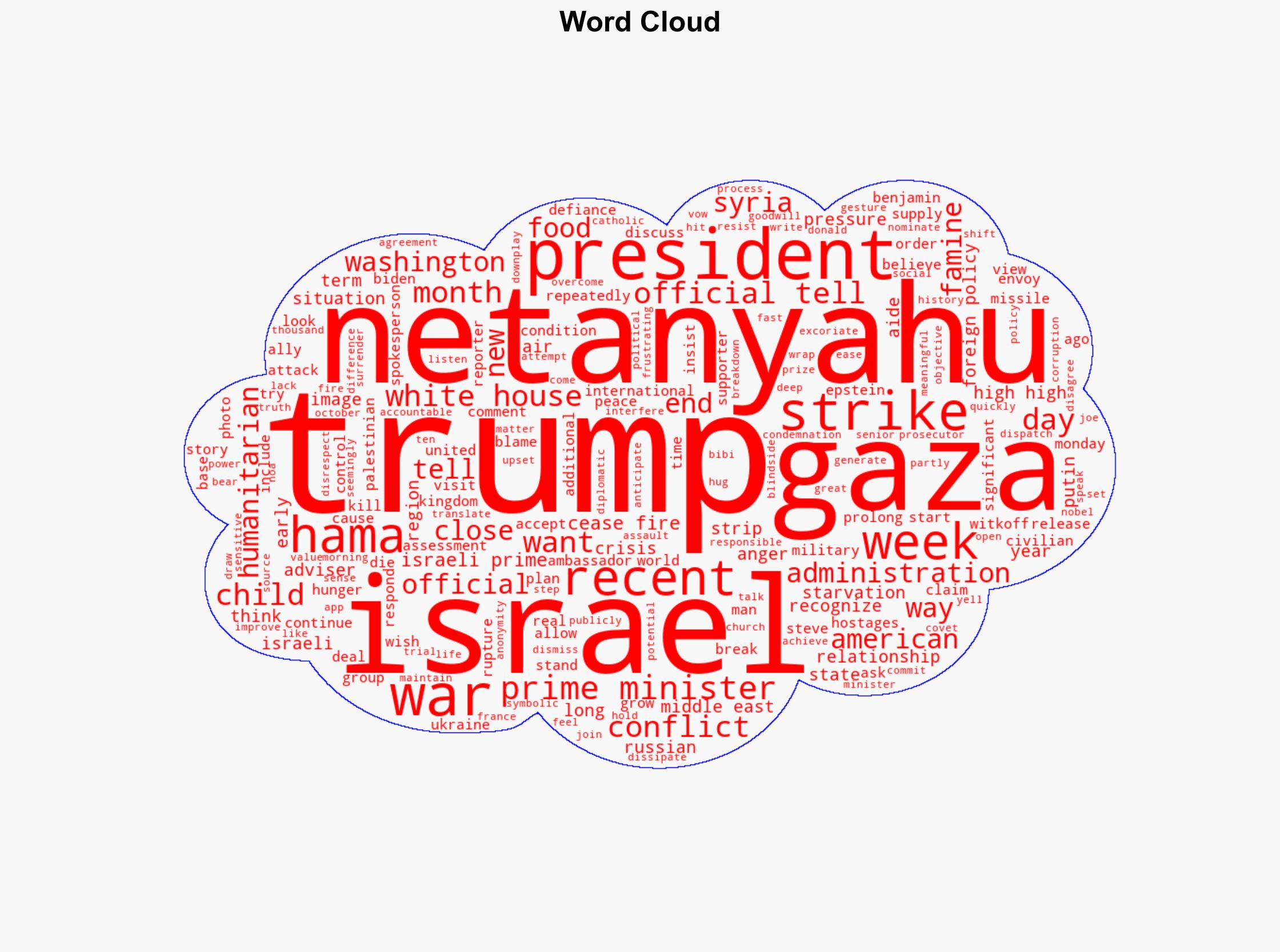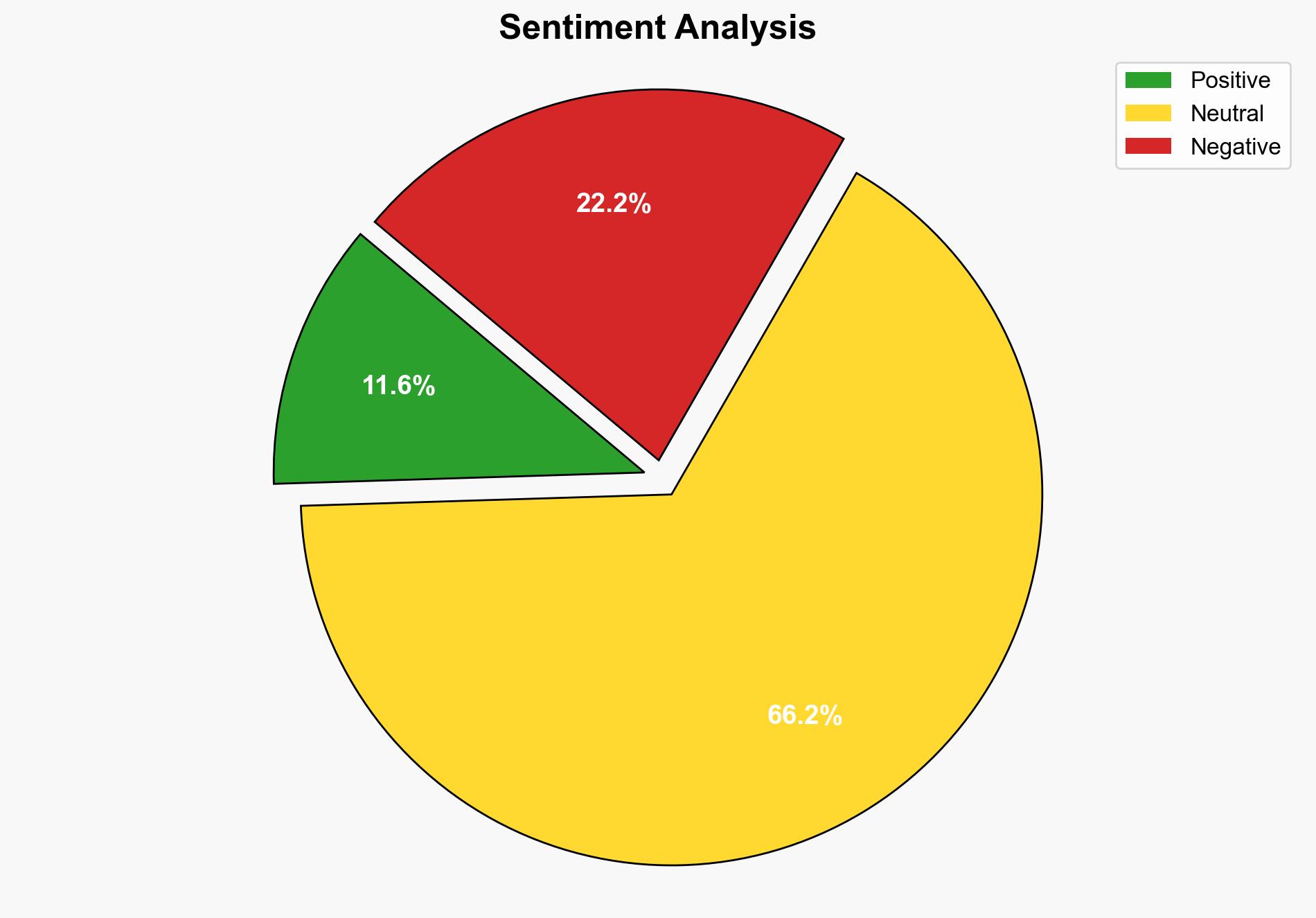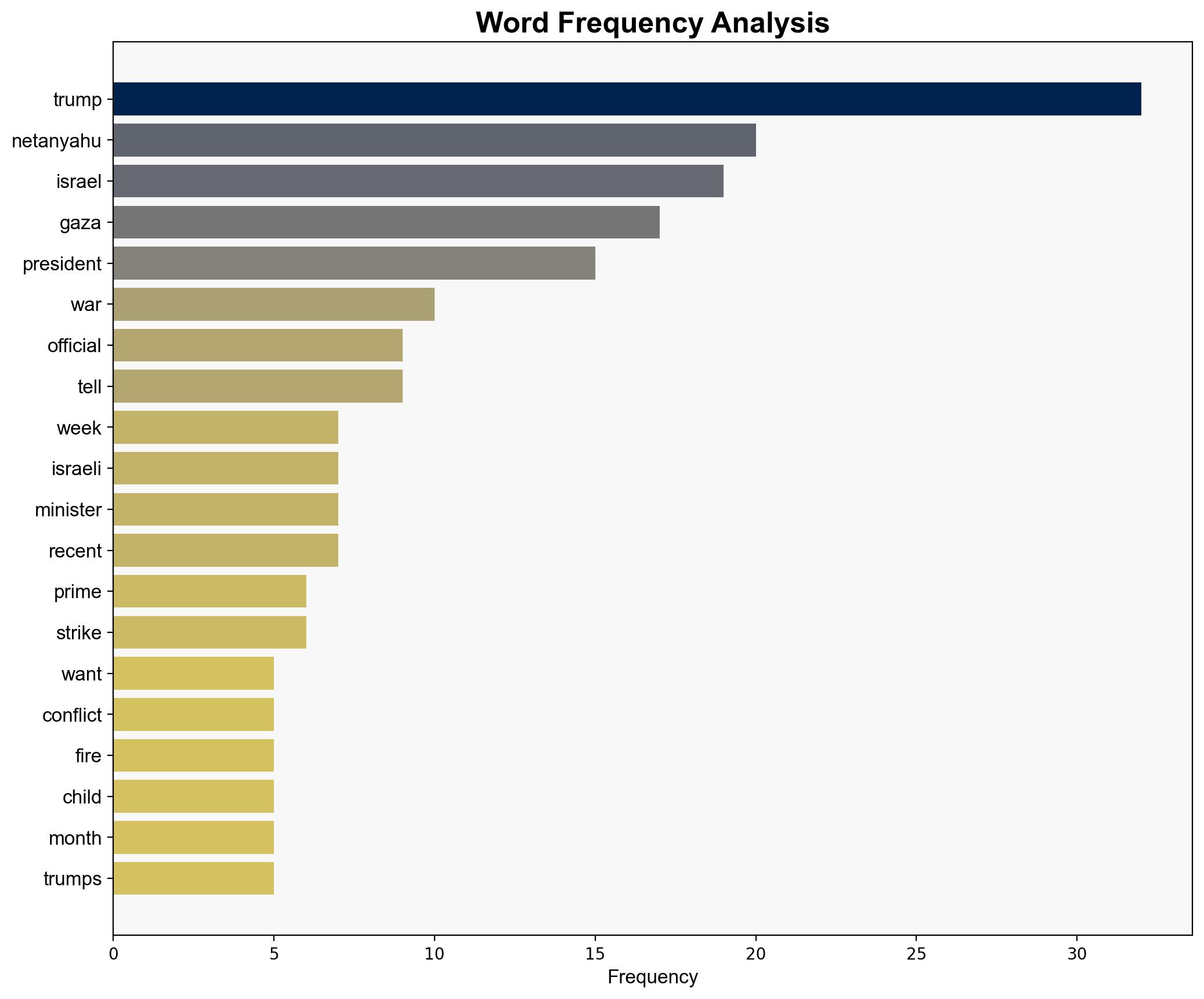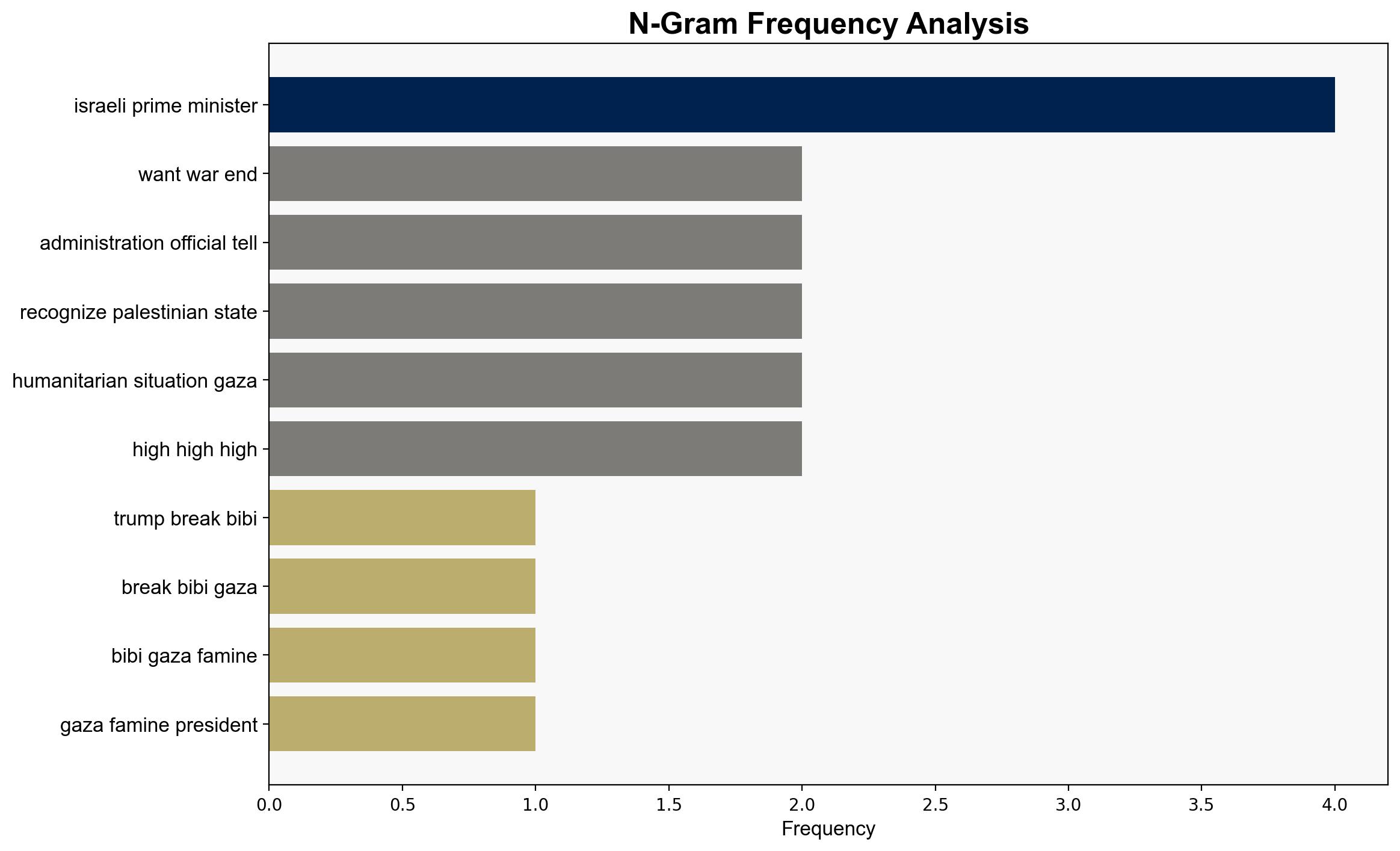Why Trump Broke With Bibi Over the Gaza Famine – The Atlantic
Published on: 2025-07-31
Intelligence Report: Why Trump Broke With Bibi Over the Gaza Famine – The Atlantic
1. BLUF (Bottom Line Up Front)
The most supported hypothesis is that Donald Trump’s public break with Benjamin Netanyahu over the Gaza famine is primarily driven by a strategic repositioning to enhance his international image and leverage humanitarian concerns to pressure Israel for concessions. Confidence Level: Moderate. Recommended action is to monitor Trump’s diplomatic engagements and Israel’s policy shifts closely, as these could signal broader geopolitical realignments.
2. Competing Hypotheses
Hypothesis 1: Trump’s break with Netanyahu is a strategic move to improve his international standing by aligning with global humanitarian concerns over the Gaza famine. This hypothesis suggests Trump is using the situation to distance himself from Netanyahu’s policies, which are increasingly criticized internationally.
Hypothesis 2: The break is primarily a tactical maneuver to pressure Netanyahu into a ceasefire and to achieve a more favorable geopolitical outcome in the region, potentially as a precursor to a broader peace initiative.
Using ACH 2.0, Hypothesis 1 is better supported by Trump’s history of responding to humanitarian crises when they align with his strategic interests, such as his past actions in Syria. Hypothesis 2 is less supported due to the lack of concrete evidence of a broader peace initiative being actively pursued by Trump at this time.
3. Key Assumptions and Red Flags
– Assumption: Trump’s actions are primarily motivated by humanitarian concerns. This could be a cognitive bias, as his past actions often align with strategic interests.
– Red Flag: The lack of a significant policy shift despite public statements suggests potential deception or a superficial break.
– Blind Spot: Potential internal political pressures on Trump that are not visible in the current intelligence.
4. Implications and Strategic Risks
– Potential for increased tensions between the U.S. and Israel if Trump’s public stance leads to policy changes.
– Risk of destabilization in the region if humanitarian conditions in Gaza are not addressed, leading to broader conflict.
– Economic implications for U.S. interests in the region if relations with Israel deteriorate.
5. Recommendations and Outlook
- Monitor diplomatic communications between the U.S. and Israel for signs of policy shifts.
- Engage with international partners to assess their responses and potential support for U.S. positions.
- Scenario Projections:
- Best Case: Successful diplomatic pressure leads to a ceasefire and improved humanitarian conditions in Gaza.
- Worst Case: Escalation of conflict due to perceived U.S. abandonment of Israel.
- Most Likely: Continued diplomatic tension with limited policy changes.
6. Key Individuals and Entities
– Donald Trump
– Benjamin Netanyahu
– Steve Witkoff
– Keir Starmer
7. Thematic Tags
national security threats, humanitarian crisis, Middle East diplomacy, U.S.-Israel relations





